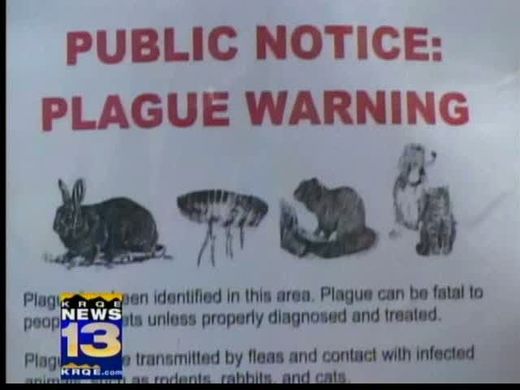The victim of the bubonic plague is recovering in a hospital, the DOH said identifying him only as being 58 years old.
The department is alerting people who live in the same area or came in contact with the man, DOH Secretary Dr. Catherine Torres said.
"Whenever there is a human case of plague, the Department of Health takes several steps to ensure the safety of the immediate family, neighbors, and health care providers," Torres said in a statement released by her office. "We inform neighbors door-to-door about plague found in the area and educate them on reducing their risk.
"We determine whether individuals close to the patient may also have been exposed to the plague and recommend preventative treatment when necessary."
Plague is a bacterial disease of rodents and is generally transmitted to humans through the bites of infected fleas but can also be transmitted by direct contact with infected animals including rodents, wildlife and pets.
Earlier this spring the DOH confirmed plague in two Santa Fe County dogs and a cat from Rio Arriba County.
The Department of Health provided these tips on avoiding and recognizing plague:
To prevent plague, the Department of Health recommends:
- Avoid sick or dead rodents and rabbits, and their nests and burrows.
- Keep your pets from roaming and hunting and talk to your veterinarian about using an appropriate flea control product.
- Clean up areas near the house where rodents could live, such as woodpiles, brush piles, junk and abandoned vehicles.
- Sick pets should be examined promptly by a veterinarian.
- See your doctor about any unexplained illness involving a sudden and severe fever.
- Put hay, wood, and compost piles as far as possible from your home.
- Don't leave your pet's food and water where mice can get to it.
Symptoms of plague in humans include:
- Sudden onset of fever, chills, headache, and weakness.
- Most cases involve a painful swelling of the lymph node in the groin, armpit or neck areas.
- Plague symptoms in cats and dogs are fever, lethargy and loss of appetite possibly with swelling in the lymph node under the jaw.
With prompt diagnosis and appropriate antibiotic treatment, the fatality rate in people and pets can be greatly reduced.




Recently, the first case of bubonic plague for the year was discovered in New Mexico. People that live in very remote or rural areas are susceptible to the disease, which is caught from fleas and has never actually gone away. More than a thousand people get it worldwide annually, and the U.S. typically has about 12 cases per year. If you thought getting an unsecured loan for medical bills was bad, just wait until you get the plague.